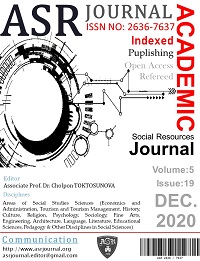YAKININI KAYBETMİŞ ÜNİVERSİTE ÖĞRENCİLERİNİN YAS SÜRECİ VE BU SÜREÇTEKİ FİZİKSEL, DUYGUSAL, BİLİŞSEL VE DAVRANIŞSAL DEĞİŞİKLİKLERİ
Author :
Abstract
Psikoloji alanındaki çalışmalara konu olan yas tutma süreci, kaybın geri dönüşsüzlüğünün ve sonuçlarının sindirildiği veya hafızaya içselleştirildiği, hayata keyif ve memnuniyetle devam etme kapasitesinin yeniden kazanıldığı bir süreç olarak tanımlanabilir. Bu araştırmanın temel amacı; üniversite öğrencilerinin aileden-akrabalardan birinin veya yakınının kaybından sonra yas sürecini nasıl yaşantıladığının ve yas sürecindeki fiziksel, duygusal, bilişsel ve davranışsal değişikliklerin belirlenmesidir. Araştırmanın İstanbul Üniversitesi Sağlık Bilimleri Fakültesi bünyesinde eğitim gören sevilen bir yakının (1. dereceden) kaybını yaşamış lisans düzeyindeki öğrencilerle kantitatif veri toplama tekniği ile yürütülmüştür. Veri toplama aracı olarak Yas Ölçeği kullanılmıştır. Çalışmada öğrencilerin cinsiyet değişkenine göre bilişsel boyutta anlamlı farklılık, yine sınıf değişkenine göre bilişsel boyutta anlamlı farklılık tespit edilmiştir. Diğer taraftan kaybedilen kişinin ölüm yaşı, ölüm şekli ve ölüm biçimi gruplarında ise yas ölçeğinin davranışsal boyutunda gruplar arasında anlamlı farklılıklar tespit edilmiştir.
Keywords
Abstract
The mourning process, which is the subject of studies in the field of psychology, can be defined as a process in which the irreversibility of loss and its consequences are digested or internalized into memory, and the capacity to continue life with pleasure and satisfaction is regained. The main purpose of this research was to determinate how university students experience the grief process after the loss of a family-relative or relative and the physical, emotional, cognitive and behavioral changes in the grief process. The study was conducted with the quantitative data collection technique with undergraduate students who had the loss of a loved one (1st degree) studying within the Faculty of Health Sciences of Istanbul University. The Grief Scale was used as a data collection tool. In the study, a significant difference in the cognitive dimension according to the gender variable of the students and a significant difference in the cognitive dimension according to the class variable were found. On the other hand, significant differences were found between the groups in the behavioral dimension of the scale in the age of death, pattern of death and form of death of the disappeared person.





